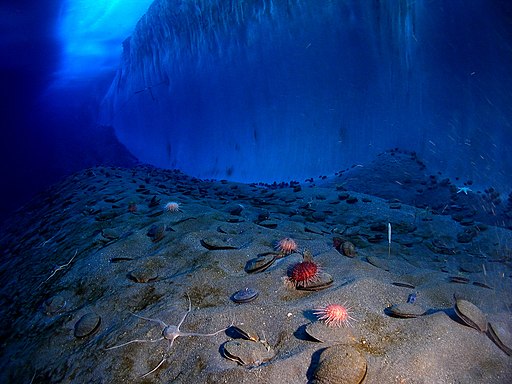Iridescence is well-known in the animal kingdom (and has been around since at least dinosaur times), but this-- the African herb Pollia condensata-- seems to be the first known example of an iridescent plant:
From Not Exactly Rocket Science, which explains the physical basis and possible evolutionary significance of this phenomenon.
From Not Exactly Rocket Science, which explains the physical basis and possible evolutionary significance of this phenomenon.





















